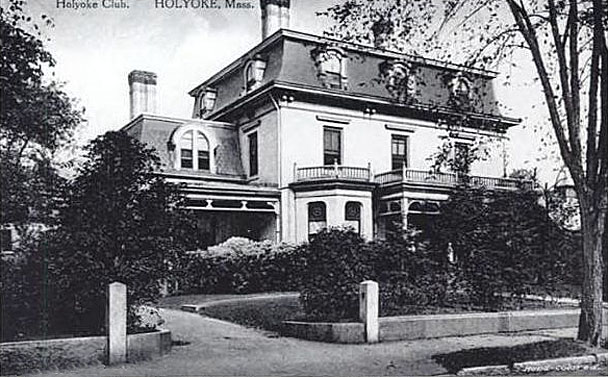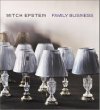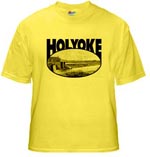by Laurel | February 25th, 2013
27 December 1903
A Novelty for the Paper City
While there may be no formal opening for several weeks, for the very sensible reason that it is not desirable to jam the new club house so full of guests as would be likely before the novelty wears off, the Holyoke Club is actually in operation, is being well patronized, and those who belong and attend are delighted with it. Being the first “wet” club of moment that the city has had there was naturally some fear on the part of certain people lest that side of the club life should dominate the situation, but good management seems to point to this being relegated to merely an incidental, as is quite proper, and the development of the other attractions seems to assure lasting success. “Dining at my club” is a new phrase for Holyokers to use, but it sees to be bound to become a common one with the members. There has previously been no place outside of a hotel where a business man would like to take a friend accustomed to metropolitan conditions. Furthermore, and better than all, there is no drawing of race or religious lines and the new club is planned on such broad lines that it will act powerfully in the breaking down of prejudices between man and man along lines that ought not to exist, least of all in a community like Holyoke. In this aspect the formation of this new club has an unusually direct bearing upon the civic life of the community, and an importance that may be much greater than its founders deemed possible.
The material equipment of the club is housed in the Joseph P. Prescott house at 22 Suffolk Street (formerly owned by Joseph C. Parsons). The interior has been remodeled somewhat to allow the club’s uses. The entrance hall is electric lighted, as is the rest of the house, the walls being in bronze leather effect. At the right as one enters is the Moorish room, reserved as the women’s parlor and immune from the fumes of the “weed.” The wall patterns are of oriental design in a very deep blue, a Moorish lantern hands in the screened bay window, and a deep soft oriental rung is underfoot — even the picture on the walls are of eastern scenes. The chairs are models of comfort, and if this room does not become popular with the wives, sisters and sweethearts of the club members, it will be a wonder, The room in the rear is finished in dark green, with heavy table and writing desk, and is to be used as the secretary’s room and also for meetings of the directors. Between to,e it may be used as a card room. George H Nicholson, freight agent of the Boston and Maine railroad, is secretary of the club, and the choice is considered as a happy one.
The room at the left of the entrance is fitted up as the German room and is devoted to “My Lady Nicotine,” to use Barrie’s term. It is finished in Flemish oak with a cozy fireplace and is ornamental with a large collection of steins. Just beyond the German room is the club dining-room, also furnished in oak, but with a lighter pattern and with cheerful papering and ornament. The tables at present in use are temporary, some of a more handsome pattern being ordered for delivery later. About 50 can be accommodated in the dining-room. The kitchen is well-appointed, a complete “layout” being furnished by Smith & Anthony of Boston, including steam tables, coffee urns, buffets and all the necessary “fixins.” This completes the downstairs outfit. Upstairs there are on the Chestnut Street side of the house the billiard-room with two tables; the women’s dining room furnished in red and white, capable of seating 24, and several smaller rooms for card-rooms with electric push buttons to call the indispensable waiter as occasion demands. Nearly all the pictures on the walls have been given by members as well as the steins in the smoking room. The present officers of the club are as follows: President: James F. Dickey; vice president, G. H. Prentiss; secretary, George H. Nicholson; treasurer, Robert A. Allyn; trustee, A. M. French, George N. Tynan, J. W. Toole, Thomas S. Childs, Thomas H. Sears and Charles W. Johnson.
Adapted from The Springfield Republican.










Now a parking structure across from Heritage Park.
Thanks … I was wondering about that.